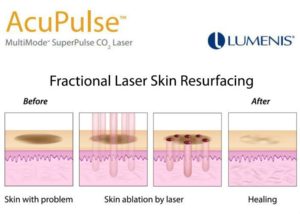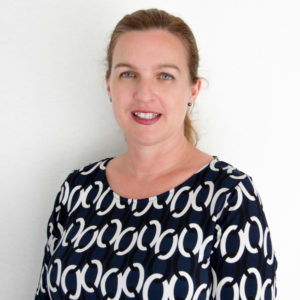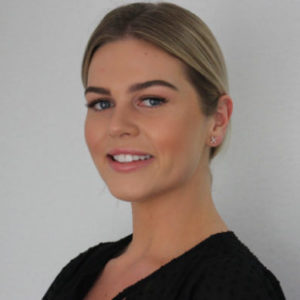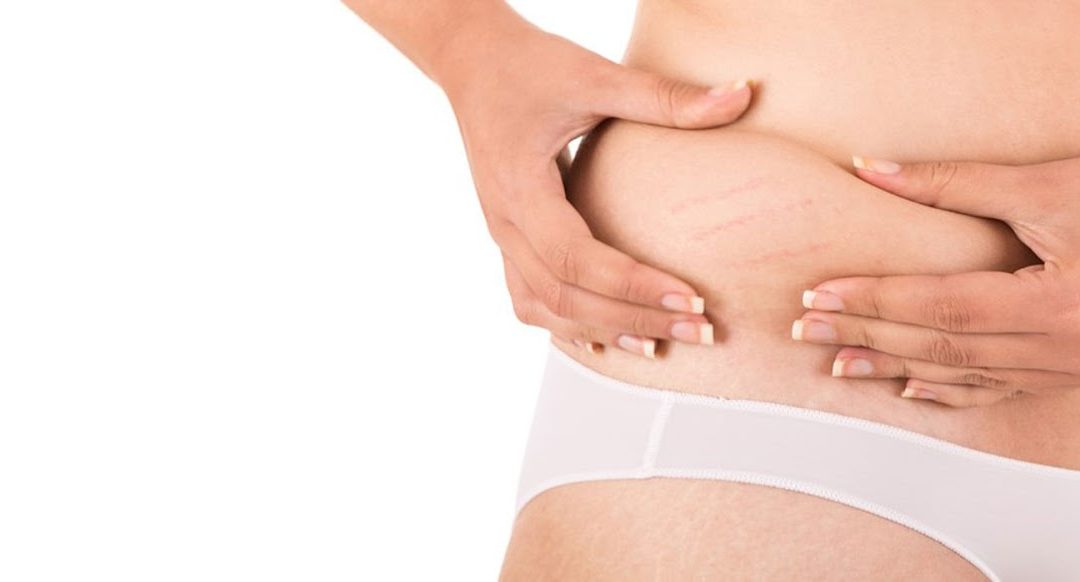Who gets stretch marks? Why do stretch marks occur? What stretch mark removal treatment options are available?
Stretch marks (also known as striae) are linear, narrow streaks, stripes, lines or marks on the skin that may be pink, purple, brown or white. They occur when skin stretches or grows rapidly in one area, causing damage to the collagen and elastin fibres and resulting in a scar. They are extremely common. Stretch marks commonly occur on the stomach and upper thighs, but can also happen to breasts/upper arms/lower back/buttocks.
Why do stretch marks occur?
Stretch marks occur due to rapid stretching of the skin which damages the middle layer of skin called the dermis. As the body grows, the connecting fibres in the dermis slowly stretch to accommodate slow growth. However, rapid growth leads to sudden stretching. When the connective tissue in this layer is stretched beyond the limits of its elasticity damage can occur causing the skin to become thin and shiny in sections or strips.
Who gets stretch marks?
-Growing children and teenagers
-People who experience rapid weight gain
-Pregnant women
-People on certain medications including steroids / cortisones
-People with certain medical conditions including Cushing’s syndrome and Marfan’s syndrome
-Women more than men
Can you prevent stretch marks?
If you are genetically prone to stretch marks you may not be able to prevent them, particularly if they are linked to childhood growth or pregnancy. You can to some degree prevent your tendency to developing stretch marks by:
-not smoking
-not rapidly gaining weight or having a BMI >30, avoid yo-yo dieting
-using cosmeceutical skincare to best prepare your skin for times of growth eg. Puberty or pregnancy.
Are there different types of stretch marks?
All stretch marks are caused by similar changes in the skin. Stretchmarks can however have an initial pink / purple discolouration, and later change to a shiny white or brown. This distinction can affect the stretch mark removal treatment choices, as pink or brown stretch marks may benefit from particular types of laser treatments that address vascular or pigmentation chromophores in the skin. White stretch marks are best treated with skin needling or ACUPULSE fractional laser.
Will stretch marks go away on their own?
Stretch marks usually fade very slowly over time, often changing from pink to white. They tend not to disappear without treatment.
How can you treat / get rid of stretch marks?
SKINCARE: There is plenty of debate about whether or not stretch mark creams and lotions actually work. There’s an abundance of products on the market that promise to smooth, lock in moisture and boost elasticity. So how do you know what products are worth trying and what products you shouldn’t bother with?
It’s important to know that while skin care products can help reduce the appearance of stretch marks regular treatments here in clinic are much more beneficial for stretch mark removal.
Any cosmeceutical containing Vitamin A, Vitamin C and Vitamin E will give you the best chance of reducing the appearance of them.
SKIN NEEDLING: Skin needling is a non-invasive treatment that uses microscopic needles to penetrate the skin within the epidermis and dermis. At Geelong Veins Skin and Laser we use the Dermapen 4. It’s an advanced micro needling device with 16 fine needles on the very tip. As we glide the pen over the surface of the skin it oscillates (goes up and down) 120 times per second making up to 1,920 micro channels (tiny puncture wounds) in the skin. The body treats these micro channels as a wound, naturally initiating the healing process that stimulates the regeneration of collagen and elastin in the skin.
Skin needling can visibly improve the appearance of stretch marks. We recommend 4-6 treatments spaced 6-8 weeks apart.
ACUPULSE LASER: ACUPULSE is a fractional ablative CO2 laser. This laser delivers focused microscopic columns of light energy deeply into the skin while leaving skin unaffected in between these microchannels. Regeneration of collagen and elastin occurs with healing of these channels, improving the elasticity and skin texture to blend with surrounding skin. ACUPULSE treatments for stretch marks are performed by the doctors and dermal therapists at Geelong Veins Skin & Laser. You may require between 3-6 sessions spaced 4-8 weeks apart.

When is the best time to treat stretch marks?
Stretch Marks are best treated early after they appear while they are still new and pink. Skin needling or vascular laser will improve stretch marks at this stage. Having said this, it is still possible to significantly improve the appearance of older, whiter stretch marks with ACUPULSE laser treatment. If you are currently pregnant it is best to avoid skin needling or laser treatments until post birth.
Can stretch marks be treated when you are pregnant or breastfeeding?
It is best to avoid laser treatments while you are pregnant. High quality skin care can help reduce the amount of stretch marks or the severity, our dermal therapists can advise on the best choices. The best time to treat stretch marks from pregnancy is from 3 months postpartum.
Stretch marks can be treated with laser or skin needling while you are breastfeeding, but it is best to avoid treating the breast area itself while breastfeeding.
Should teenagers have stretch mark treatment while they are still growing?
Growing children or teenagers can have skin needling treatments for their stretch marks. Some children / teens are not at all bothered by their stretch marks, (it is a relative of the child who is more concerned than the child) in this group we would not recommend treatment. On the other hand there can be significant stress or embarrassment about stretch marks and a treatment to help fade these marks can make a huge difference to overall wellbeing – this is the group where we offer treatment which can be done at any age / stage. We thoroughly explain and discuss the procedures, expectations and outcomes with both the child/teen and their consenting guardian before deciding on the best stretch mark removal treatment option.
Contact us to discuss your stretch mark removal options, book online or call us on 5229 6866.
Authored by:


Dr Barbra Ward – MBBS (Monash) FRACGP, Keely Barrett – Laser & Beauty Therapist
